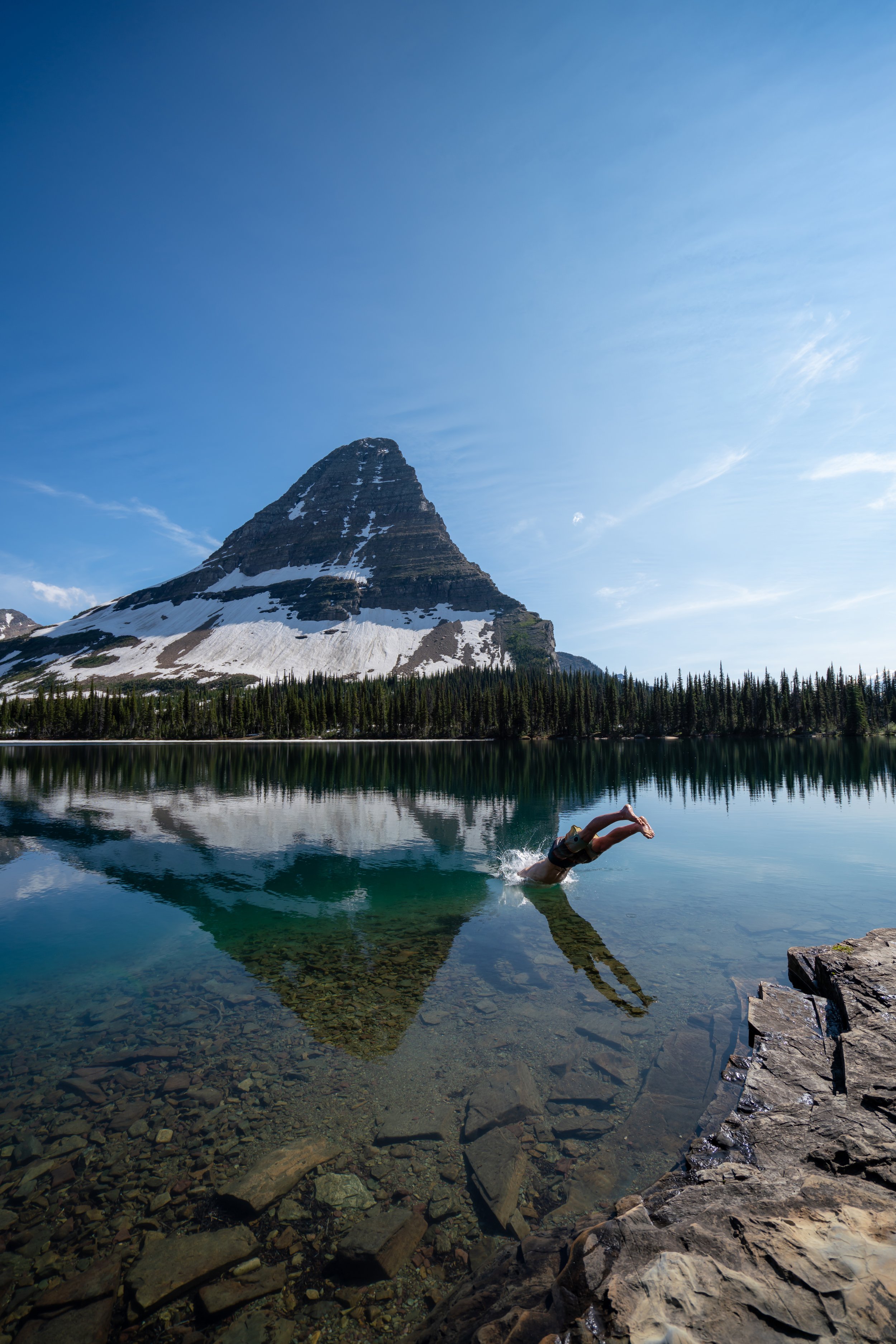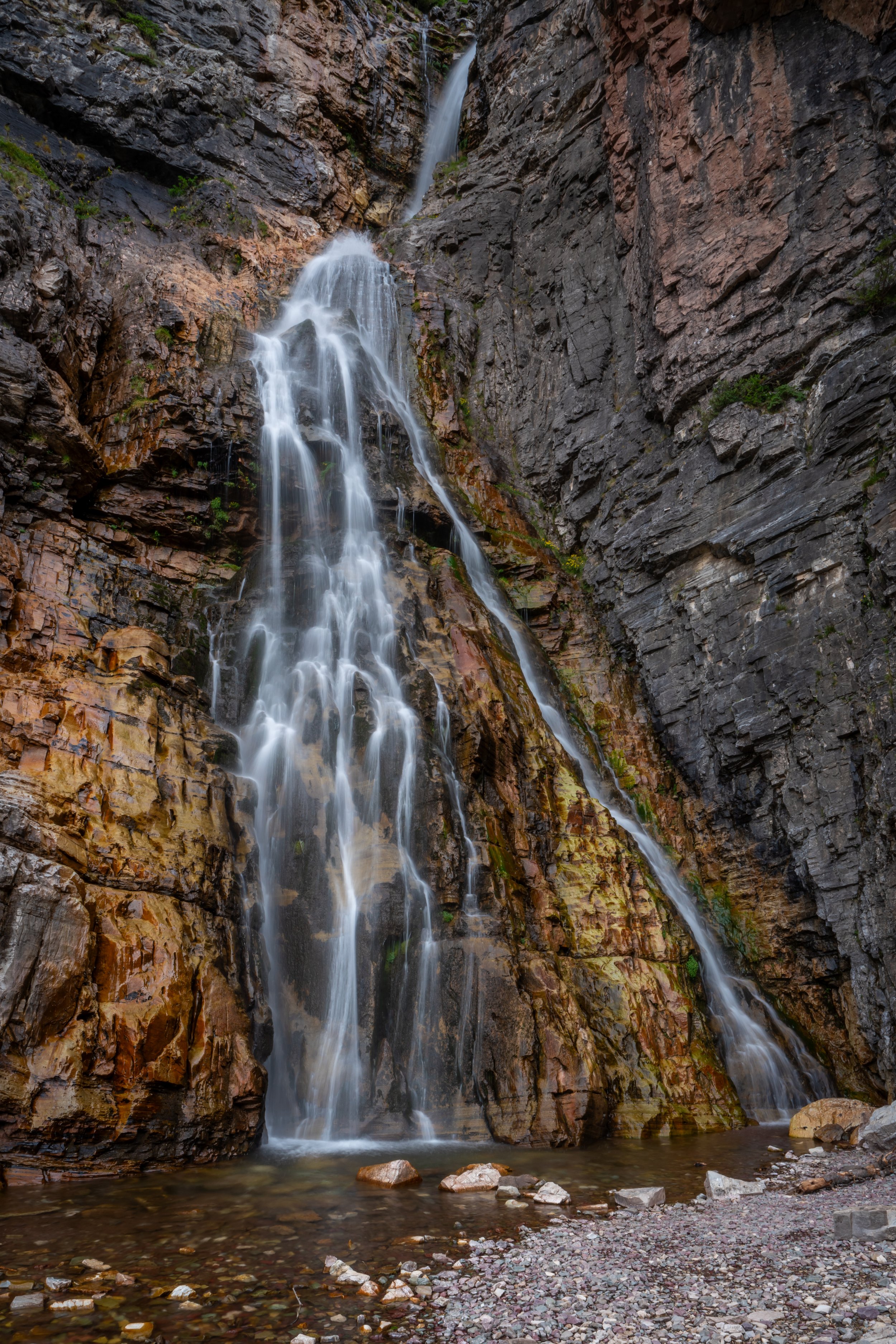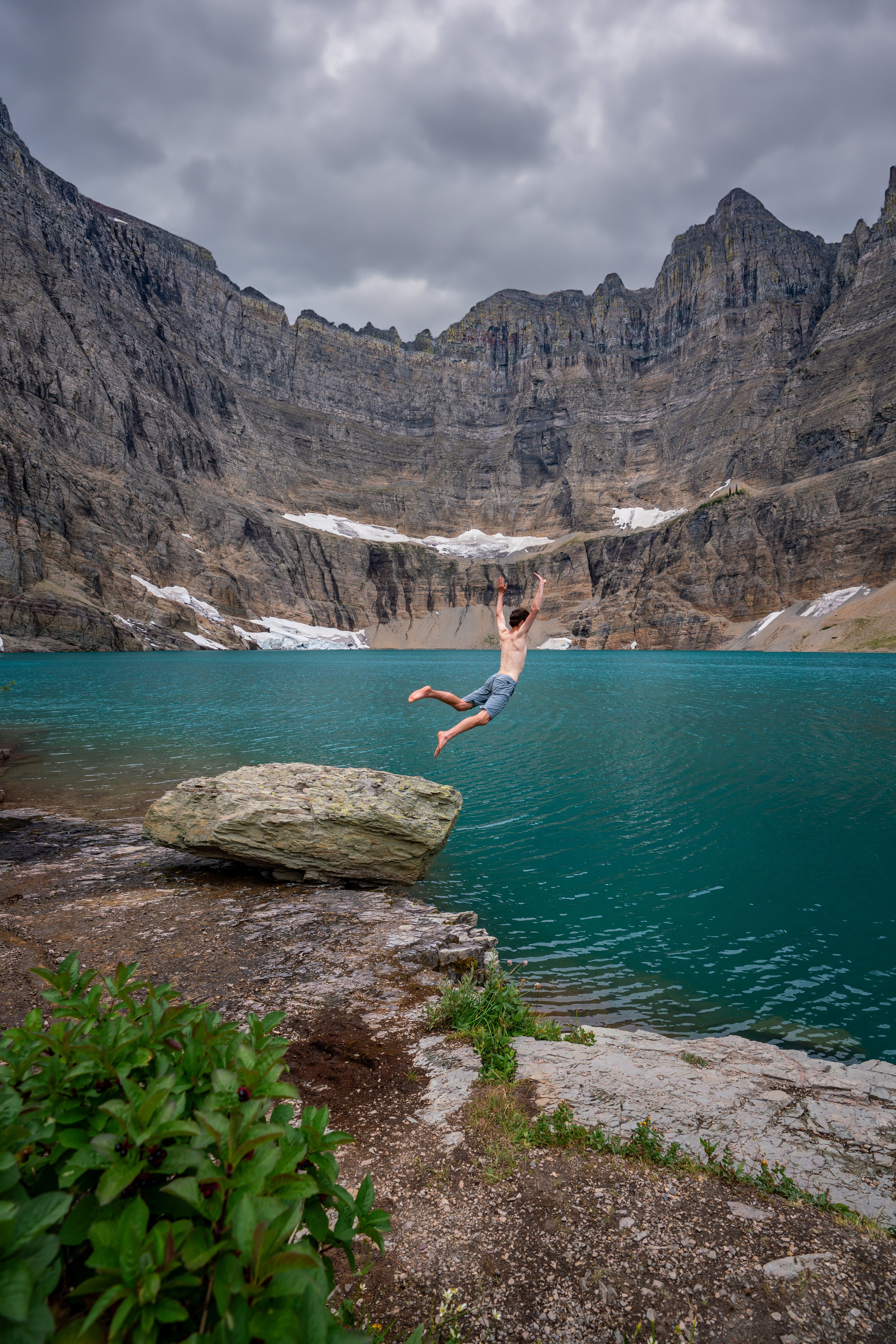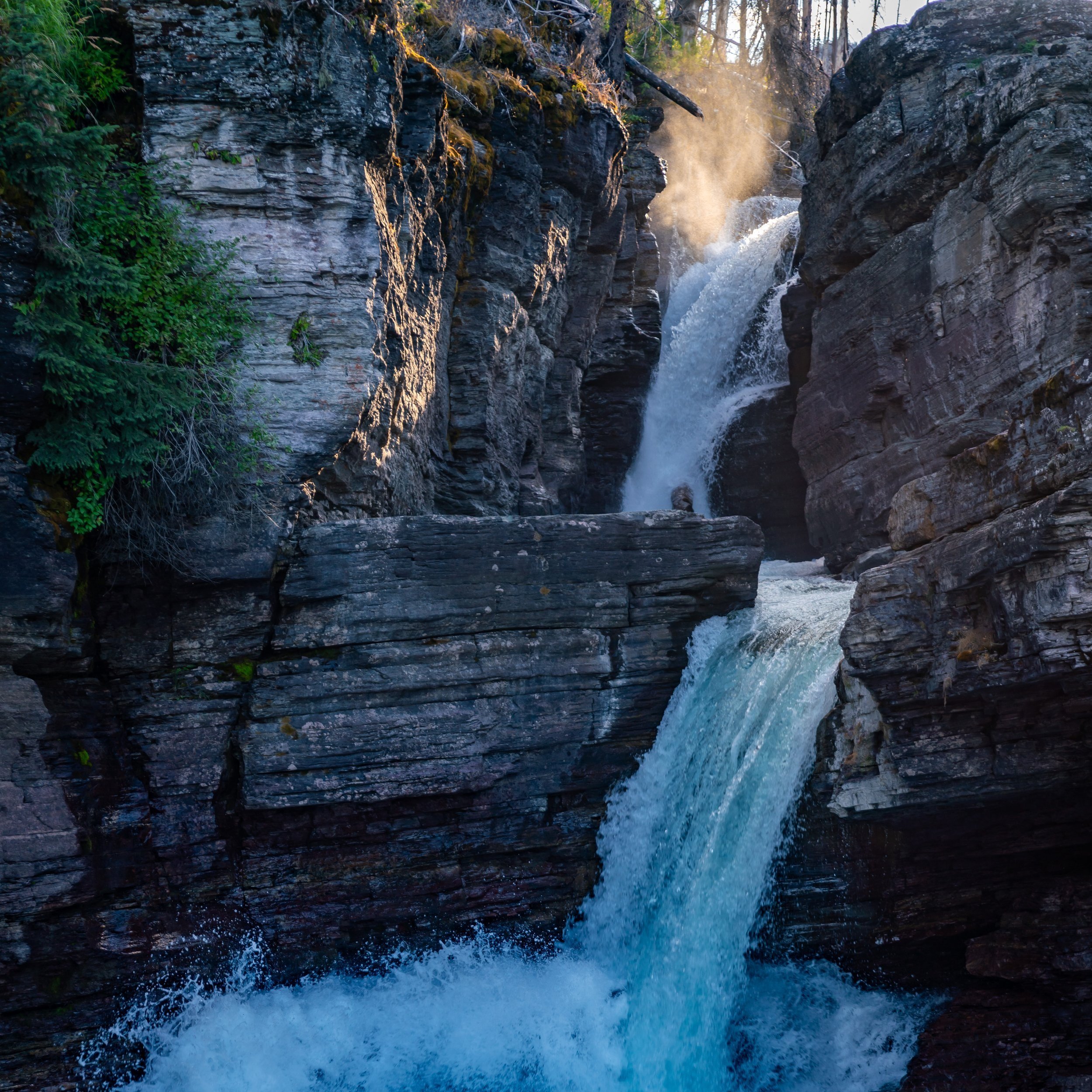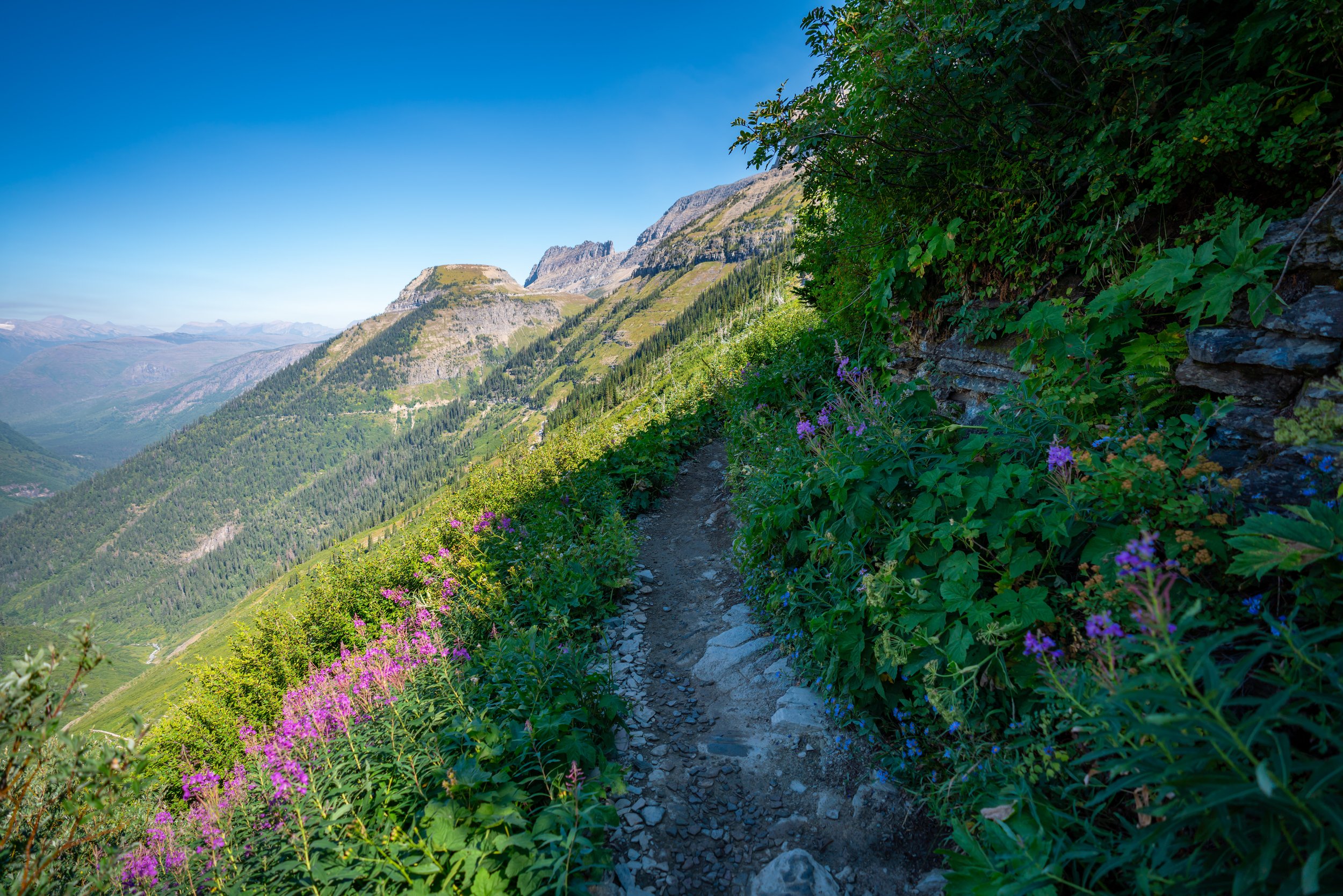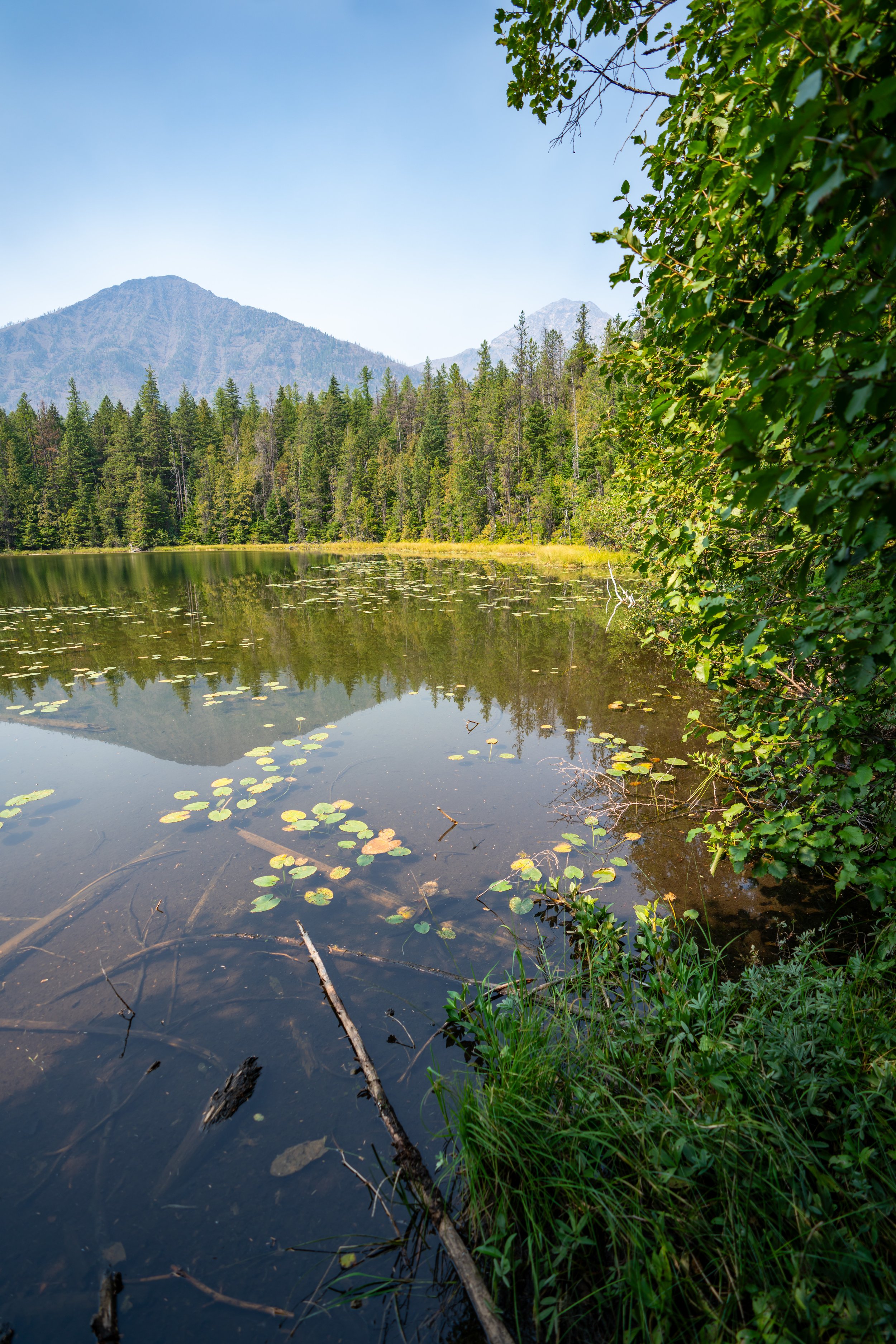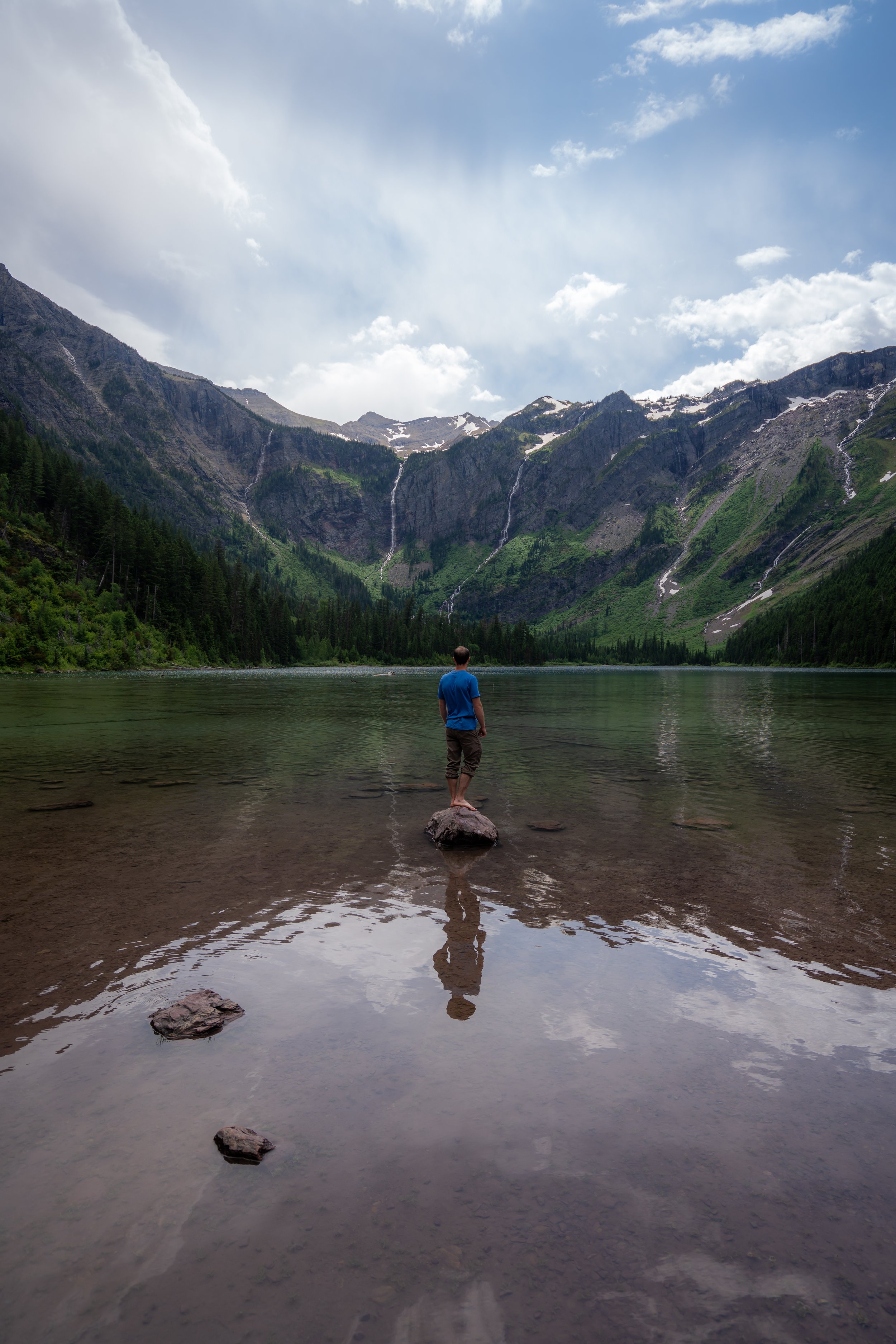Hiking the Cracker Lake Trail in Glacier National Park
Distance: 12.8 miles / 20.6 km
Elevation Gain: ~1,100 ft. / 335 m
The Cracker Lake Trail in Glacier National Park is the best of the best!
By this, I mean that the turquoise-blue waters of Cracker Lake are truly unlike any other within the park—comparable only to the Grinnell Glacier Trail, in my opinion.
This is all to say that the Cracker Lake Trail is truly a stunning and unique one-of-a-kind adventure, and it’s one of my top recommendations for anyone visiting Glacier National Park for the first time!
Cracker Lake Trailhead Parking
Parking for the Cracker Lake Trail is located in the same parking lot as the Many Glacier Hotel.
For this reason, the Cracker Lake Trailhead is the toughest trailhead to find parking at inside the Many Glacier entrance, because somewhere between half to two-thirds of the stalls in the parking lot are already taken by hotel guests.
This is why I recommend arriving before 7 a.m. and making Cracker Lake the first thing you do before anything else in Many Glacier. If not, the parking lot will fill up very fast. However, finding a spot should never be an issue if you’re arriving in the park prior to 6 a.m. to beat the vehicle pass reservation time.
Google Maps Directions: Cracker Lake Trailhead
Hiking Checklist - Glacier
Here is a complete list of must-have things that you will want for any hike in Glacier National Park.
Hiking the Cracker Lake Trail
Overall, the Cracker Lake Trail is a fairly moderate hike, despite its long 12.8 miles (20.6 km) roundtrip distance to the lake.
I say this because the majority of the elevation gain is spread out over the last 4.6 miles (7.4 km), making the Cracker Lake Trail fairly mild.
Cracker Lake-Piegan Pass Junction
Shortly after the trailhead, the Cracker Lake Trail will split with the Piegan Pass Trail.
Go left to keep hiking toward Cracker Lake.
Then, the Cracker Lake Trail remains mostly flat until the 1.8-mile (2.9 km) mark, as it parallels Lake Sherburne toward Canyon Creek.
Lake Sherburne
This photo was taken in mid-August, looking out toward a very dry Lake Sherburne.
Cracker Lake-Horse Loop Junction
At about 1.5 miles (2.4 km), the Cracker Lake Trail comes to the first of two splits for the Cracker Flats Horse Loop.
Go right to stay on the Cracker Lake Trail.
Second Cracker Lake-Horse Loop Junction
Then, where the Horse Loop meets back up with the main Cracker Lake Trail, is also where the trail starts to climb the switchbacks up toward the lake.
Additional Early Season Gear
Depending on the winter snowpack, micro-spikes may be necessary, as the trail goes up the Cracker Lake switchbacks.
This is because shady hikes, like the Cracker Lake Trail, can be covered in snow for much longer than more exposed trails.
I personally use the Yaktrax below.
If you’re hiking the Cracker Lake Trail in August, there may be countless Thimbleberries along the hike, which are edible for humans.
However, expect them to taste a bit different than normal raspberries that you might buy in a store.
However, unlike the Thimbleberries above, Red Baneberries are not edible.
They are considered poisonous and can cause a whole host problems should anyone consume them.
Canyon Creek
The last part of the Cracker Lake Trail crosses over to the east side of Canyon Creek, which makes for a nice mental checkpoint that you’re getting closer to Cracker Lake.
Finally, if you notice these Black Elderberries, they should also not be consumed raw, as they can also cause problems, similar to the Red Baneberries shown above.
Cracker Lake
Once you reach Cracker Lake, you can hike as far or as little as you want along the east side of the lake, as there are a number of be small trails that branch off down to the lake.
Warning
One should never dive into Cracker Lake, as the depth of the water cannot be seen, on account of the milky turquoise color.
Cracker Lake Campground
The Cracker Lake campground is located at the far end of Cracker Lake, where the National Park Service provides a place to hang your bear bag as well as a pit toilet near the flat areas to pitch a tent.
Both of the line and the bag below is exactly what I use to make a bear bag when I camp in the backcountry.
These are two completely unedited iPhone photos, so yes, the water really is that blue!




